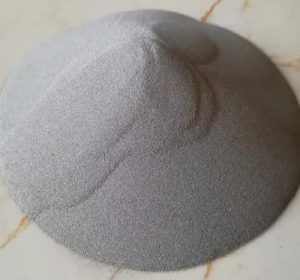Introduction
Tantalum is a rare and highly corrosion-resistant metal, and its powdered form offers unique advantages that set it apart from alternative materials. In this article, we will explore the characteristics of Tantalum Powder and how it compares to other materials commonly used in industries such as aerospace, electronics, and chemical processing.

Tantalum: A Brief Overview
Tantalum is a transition metal with the atomic number 73, known for its remarkable corrosion resistance, high melting point (approximately 3,020°C or 5,468°F), and excellent conductivity of heat and electricity. These properties make it an ideal candidate for a wide range of applications, especially in harsh environments.
Advantages of Tantalum Powder
Tantalum Powder, derived from the rare metal tantalum, possesses a unique set of advantages that make it a valuable material in various industrial applications. Here are some key benefits:
- Corrosion Resistance: Tantalum is renowned for its resistance to corrosion by acids, including sulfuric, hydrochloric, and nitric acids. This property is a game-changer in industries where exposure to corrosive substances is a concern.
- High Melting Point: Tantalum’s exceptionally high melting point makes it suitable for applications involving extreme temperatures, such as aerospace components and superalloys.
- Biocompatibility: Tantalum is biocompatible, and it is an excellent choice for medical implants and devices.
- Excellent Ductility: Tantalum can be easily fabricated into various shapes and forms, making it versatile for manufacturing.
- Low Thermal Expansion: Its low coefficient of thermal expansion ensures dimensional stability at temperature variations.
Comparing Tantalum Powder with Alternative Materials
Therefore, this highly specialized material is set apart from other materials because of several distinctive characteristics. Here’s a comparison between Tantalum Powder and some other commonly used materials:
- Tantalum vs. Titanium: Titanium is another corrosion-resistant metal commonly used in aerospace and medical industries. While titanium is lighter than tantalum, it is not as resistant to certain aggressive chemicals.
- Tantalum vs. Stainless Steel: Stainless steel is less expensive and more readily available than tantalum, but it may not withstand the same harsh environments as tantalum. Tantalum outperforms stainless steel in applications involving highly corrosive substances.
- Tantalum vs. Niobium: Tantalum and niobium are often used together because of their similar properties and their ability to form alloys. Yet, tantalum has a higher density and better resistance to corrosion.
- Tantalum vs. Alloys: Various alloys, such as Hastelloy and Inconel, are used in chemical processing due to their corrosion resistance. However, these alloys may not match tantalum’s level of resistance to all corrosive agents.
Conclusion
Tantalum Powder stands out as a versatile and reliable material in industries that demand corrosion resistance, high-temperature stability, and biocompatibility. And it outperforms alternative materials thanks to its impressive corrosion resistance. As technology advances and new applications emerge, it is likely to continue playing a pivotal role in various high-performance industries. Stanford Advanced Materials (SAM) provides various kinds of tantalum products. Send us an inquiry if you are interested.